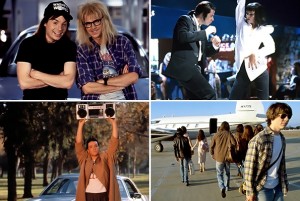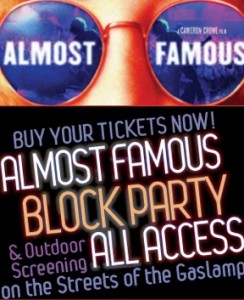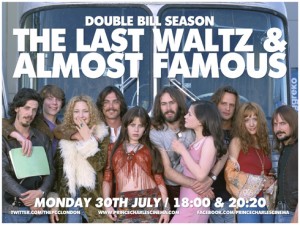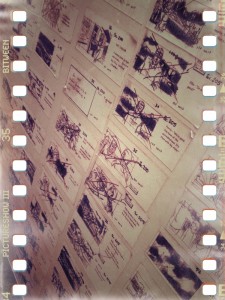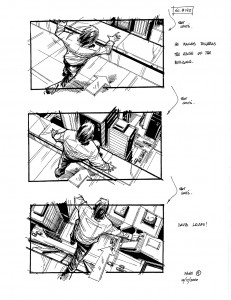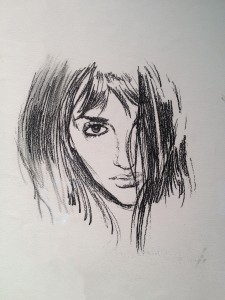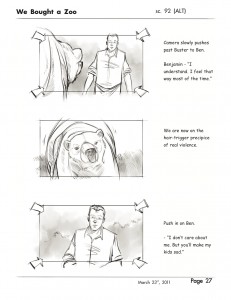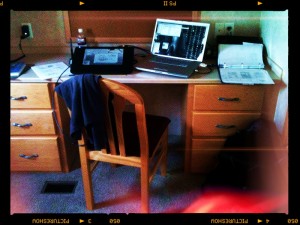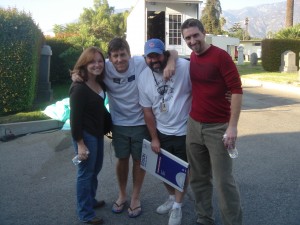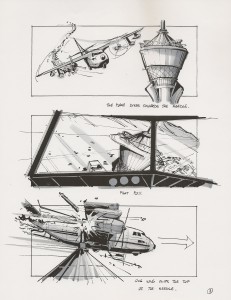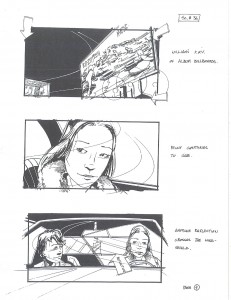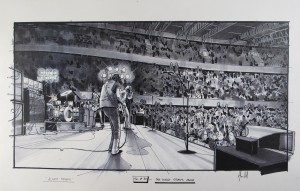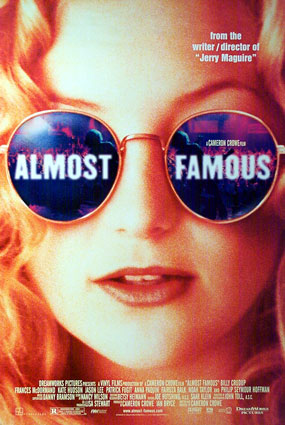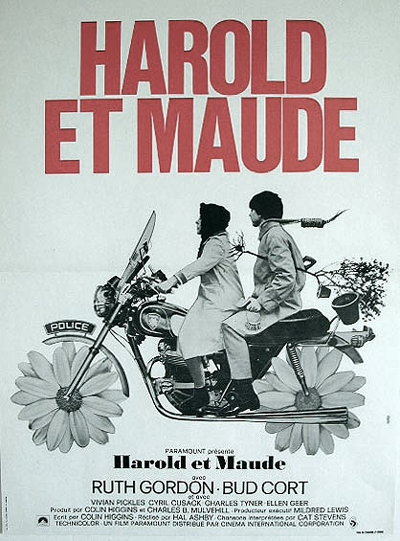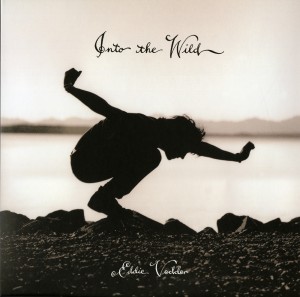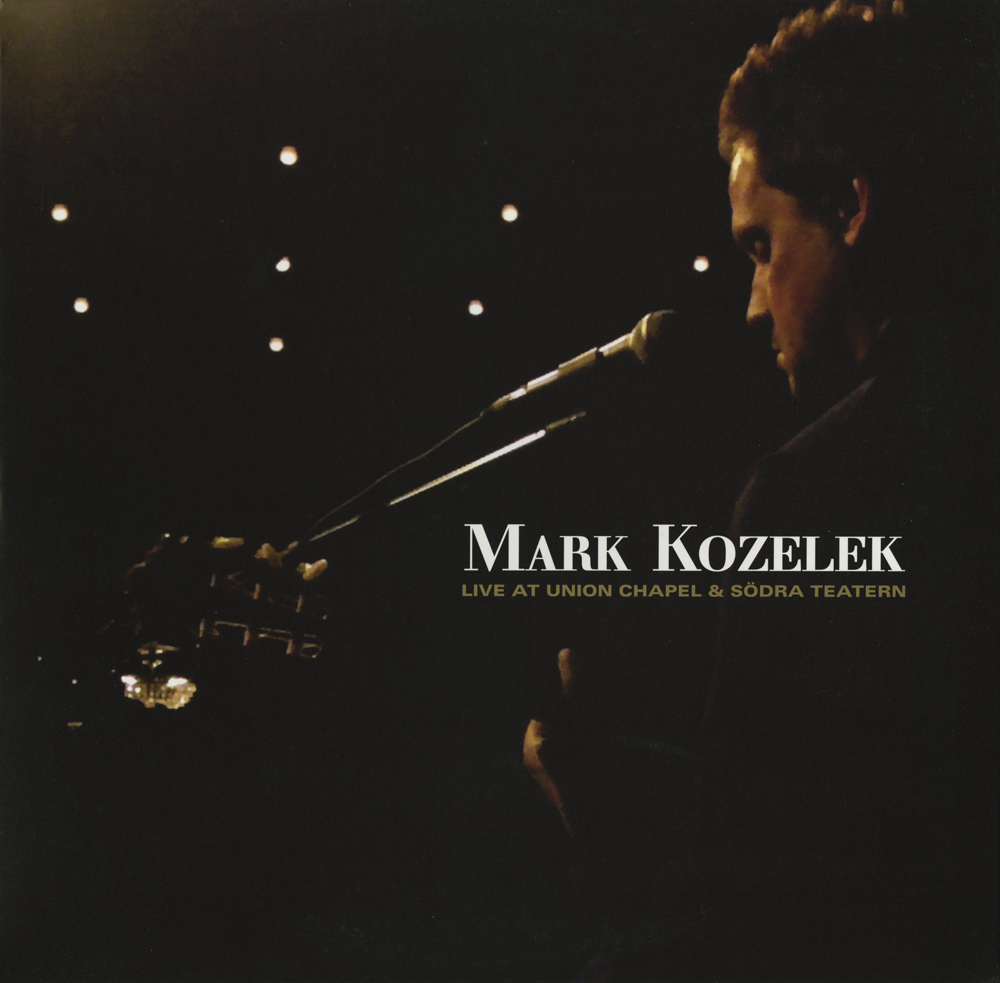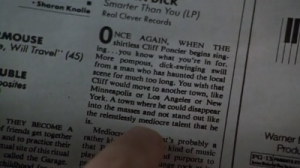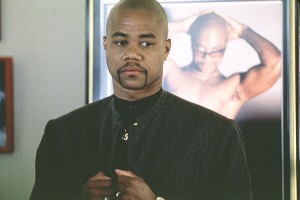Rob Sheff from Rolling Stone recently shared his 30 Greatest Rock & Roll Movie Moments. It’s a fun list and worth sharing with you all too!
Tag Archives: Almost Famous
Almost Famous Block Party – San Diego Film Festival
There’s going to be an Almost Famous Block Party this Friday as part of the San Diego Film Festival. The special guest will be Pennie Trumbull (in her first public appearance). She is of course, the main inspiration for Pennie Lane in the film. You can get all the details over at the San Diego Film Festival’s official site.
Almost Famous – Bootleg Cut Screening in UK
The Bootleg Cut of Almost Famous will be screening as part of a double feature with The Last Waltz. The Prince Charles Cinema in London will host the event on July 30th. More details and ticket info over at their official site.
Meet the Crew: Alex Hillkurtz – Storyboard Artist
Storyboard Artist Alex Hillkurtz has been working in the industry since 1993. He has worked on a wide variety of films during his career including the last four of Cameron’s films. We sat down for a two-part chat to learn more about his background and his variety of projects.
Is it true that you were born in England? When did you come to the States? Are you an American citizen?
I was born in England. My parents are British but we moved to Northern California when I was a baby, so I’ve grown up here. I quickly learned to speak American when teased in kindergarten about my British accent. I now have dual citizenship, so I feel like Jason Bourne when traveling with more than one passport. I’m sure having my feet planted on both sides of the Atlantic helps me to see things from different perspectives, but I can fluctuate between feeling at home on either continent, to feeling a complete outsider no matter where I call home.
How old were you when you knew you had some artistic talent?
I don’t remember a time when I wasn’t drawing. I was always that kid in the back of the class drawing space ships and dragons. I think it’s served me well.
Did either of your parents have that skill?
My mom does really nice pen and ink illustrations, and her father before her did some beautiful sketches during his time in WWII. I feel privileged to be the first generation in my family to actually make a living with art.
How did that early talent manifest itself? What types of things were you drawn to?
I would fill reams of paper with drawings of dinosaurs, that was my early training. Maybe I should’ve spent my childhood drawing earnest and off-beat romantic characters instead. I was never a real comic book fan (though I know a lot of storyboard guys come from that tradition), but I was always a movie fan. My parents would take me to revival houses to see things before I could understand what I was seeing – Wages of Fear, Creature From the Black Lagoon, 2001: A Space Odyssey. And I was always drawing, just dumping my imagination on the page. Later for me came painting and watercolors.
Did you go to a trade school specifically for art, or did you go to a traditional University?
I went to Chapman University through their film program. That’s where I learned how to make movies – directing, cinematography, lighting, editing, sound, the whole thing. I came out of there with a good grasp on what it takes to make a film.
How did you get your first industry job as a storyboard artist?
I was a production assistant for a while after graduation and was shocked that no one wanted to hire me as a director! It was a pretty rough awakening after film school. I knew I could draw, so when I was working on Phantasm 3, I asked director Don Coscarelli if I could do some storyboarding, and he let me have a crack at a few sequences. I was in heaven. I got my first screen credit as a storyboard artist on that film, a big moment for me. I figure it was a win-win, because they got boards for a PA rate. From there I just started telling people that’s what I did, and some of them actually believed me.
Was working in film something you’ve always wanted to do?
When I was real little I wanted to be a paleontologist, I wanted to dig up dinosaur bones in exotic lands. Then I saw Star Wars. I think half the people in the industry today trace their spark back to that moment in 1977. But it was the first time that a film aired “making of” programs on TV, and I could see that these magical things called movies were made by mere mortals. I got my hands on my dad’s Super-8 camera and suddenly my room was my movie studio, the back yard was an alien jungle planet. I made stop-motion comedies, spaceship battles, jungle dinosaur adventures, clay-mation spacemen on a paper mache moonscape…
Little did you know, the movie that sparked your love of film was produced by your future Father-In-Law, Gary Kurtz! Some of your credits are under Alex Hill and others are listed as Alex Hillkurtz. Why the two different names?
My wife (ed. Tiffany Hillkurtz, an esteemed film editor and daughter of producer Gary Kurtz) and I combined our names when we got married. I’m a Hill, she’s a Kurtz. We thought it would be a cool thing to do and much better than a hyphen. The only debate was weather to go with Hillkurtz or Kurtzhill, or some scramble like Kilohertz. It’s fun to see the reactions of friends from high school or college who knew me then.
As an X-Files fan, I noticed you worked on the series back in 1999. What did you take away from that experience?
X-Files was a real eye-opener for me. Those guys worked so hard to achieve so much in so little time. In a lot of ways it felt like I was back in film school with a tight crew doing their best to achieve greatness. It was also when I met director Rob Bowman who was really open to suggestions. In our first meeting – he was filming an upcoming episode, so we would chat between takes – he treated me like a fellow filmmaker. He’d give me notes, but also wanted my take on things, and I felt comfortable enough to give it. That was also the same year I worked on Almost Famous, so suddenly I found myself working with directors who were secure enough to genuinely invite collaboration.
Speaking of that. That was your first project with Cameron. How did Almost Famous come to your attention?
I had worked with Art Director Clayton Hartley on a couple things, so he brought me on to do set illustrations. It was there that I met Clay Griffith and they introduced me to Cameron and thought there might be a few sequences that storyboards would be useful for. Or maybe they just liked that I was always playing a lot of Peter Gabriel in the office.
What was your storyboard process like with Cameron working on Almost Famous.
It was really great. The first scene I drew for him was William and the band being lead on stage by the light of a flashlight. There’s some heavy symbolism there for me being lead out of the dark, and having a backstage pass to this amazing film. From there Cameron just wanted to keep going. I drew William and Penny Lane driving along Sunset to the Riot House, Russell getting electrocuted on stage, the bus crashing through the gates, some concert stuff, some bus stuff, some hotel room stuff… There was an amazing energy working on that film, it was like we were all on the road with a band we love. None of us wanted it to end.
Vanilla Sky seems like a natural film to require some extensive storyboarding. Did you just work on the ending or did you storyboard other sequences as well?
Again, there was quite a bit I drew for that film. The car crash, Times Square, the whole ending, etc… It was also the first time one of my drawings ended up on screen – the scene where Tom and Penelope draw each other, that’s my drawing of Penelope. Cameron had me do hundreds of sketches of her to catch the right mood. I think Cameron kept me on for a couple extra weeks just drawing pictures of Penelope Cruz. It’s a rough job.
Moving on to Elizabethtown, what was the biggest challenge for you working on that film?
It was actually a pretty great experience because Cameron and I had a lot of time to really dive in deep on that one. It’s a very personal story for Cameron and we really peeled back the layers of almost every scene to find the images that best expressed the story. For a while there I was splitting my time between LA and London (my wife was working on a film in the UK), so I’d be drawing these quintessential American scenes, listening to a playlist of only American bands, and then have this amazing cultural whip lash when I looked out the window to see black cabs on rainy London streets. Very surreal.
What sequence in We Bought A Zoo went through the most changes in regards to your work?
Cameron and I worked on the Buster Roams Free sequence for a while. It’s a pivotal moment for Ben in the film, and Cameron really wanted to show this connection between Ben and the bear. We kept adding little moments between the two of them, even writing in unspoken dialogue between these two characters yearning for connection and escape, like a conversation between two men both at a crossroads in their lives. The scene also required a lot of logistics of how to shoot Matt Damon and a real bear together – whether we needed to use VFX, stand-ins, animatronics etc. In the end I think it was a fairly straightforward shoot, with the emphasis on the moment of connection between two wise men.
You’ve now worked with Cameron on four feature films. Tell me about your working relationship with him and why it’s been so successful.
I think we trust each other to bring our best work. Cameron is a really intuitive writer, his scripts are a joy to read, and I love being in the room when we start turning his words into pictures. We’ll really unpack scenes to find out what they’re about at their core, and how best to express that visually. We’ll act things out, we’ll share clips from films we love, he has binders full of images culled from magazines that capture certain moments, emotions and gestures that we’ll incorporate into scenes. And he’s always scribbling down notes of ideas for dialogue or inspiration. You know the meeting is going well when Cameron is joyfully scribbling notes. And then there’s the music!
What is something about a storyboard artist that most people might not be aware of?
Movies can be such a visual feast, but they all start with a script, black and white words on a page. Storyboarding a scene is the first time a project is transformed from the written word into a visual medium. There’s something magical in that transition, it’s alchemy and I absolutely love it. A fellow storyboard artist has said that we’re the first ones to see the movie. That’s a cool thing!
You directed a film entitled Recipe for Disaster back in 2000. Was that a short film or a feature? Is it correct that humor writer Dave Barry wrote the script? Did that experience have an effect on your subsequent storyboard work? Do you hope to direct again in the future?
Yeah, that was a short film that my wife (before she and I met) had the script to. It’s based on a Dave Barry article that’s a spoof of disaster movies. It’s actually the project we met on, so thanks, Dave! I’ve made a few short films over the years, and you quickly learn that even if you can draw a sequence it doesn’t mean it’s shootable. Directing and storybaording feed off each other, so it’s a natural thing for me to go back and forth, figuring out new ways to stage action, interesting ways to portray an emotion. You can play on the page, try different things out, run the movie back and forth at no cost, it’s such an economical way to figure out your road map. Then when you go to shoot something, you’ve got a plan. You can always deviate from the plan, but it’s an amazing tool. And yes, I would love to direct again. I did second unit directing on It’s Complicated after boarding that film for Nancy Meyers, so the goal is to do more of that in the future.
You’ve worked with a wide variety of action and comedy directors in addition to Cameron (Jonathan Mostow, Simon West, Ivan Reitman, Peter Segal, Adam McKay, Nancy Meyers). In what ways are they different? How are they similar?
Some directors are very particular about what they want, so storyboarding becomes illustrating their vision. Others are very into collaboration. I really enjoy working with writer/directors, not only because I admire both those talents so much, but because they’ve lived with the story for a long time before anyone else gets involved. It becomes a matter of adding flesh to the bones, and discovering what sort of animal we’re all dealing with.
You’ve also recently worked with two directors who are more well-known as actors, both of whom are beginning their career as directors (Angelina Jolie and Ben Affleck). Any differences they might share, having come into directing with such strong acting backgrounds?
Angelina was great. Having come from in front of the camera, I think she’s really good with actors. There’s an immediate trust you have with other actors because you’ve been there and you understand the vulnerability. The unknown for her was in staging the action scenes, and again, translating the written word into interesting visuals, and that’s where I came in.
Argo is Ben’s third film as director, and it turns out he knows what he’s doing. Writing and directing is one thing, but acting and directing, I’m in awe of that! I don’t know how people do it. There are big crowd scenes in the film, as well as locations in other countries that needed to be married to sets in LA. I think early on Ben saw just how prepared he would be once filming began if he was armed with a stack of storyboards.
- Technology is radically changing the film industry these days, from visual effects to movie theatres to some films not having a single frame shot on actual film. How has technology changed the work you do on a daily basis?
I draw digitally using a Wacom cintiq tablet and Corel Painter. I lay out the dialogue and descriptions digitally, so I can email pdfs of entire scenes. Gone are the days of physically cutting and pasting paper, hand writing shot descriptions, whiting out my spelling mistakes… It’s a lot cleaner now. I’ll draw any given scene four of five times, there’s always changes with staging, or location, or whatever, so making changes digitally is fairly seamless. But with all this technology, it still has to feel hand-made and organic. I don’t want the fact that I’m drawing digitally to get in the way of the emotions of the scene.
I’ve been drawing 100% digitally since 2001. I was on a film in NY working with a director in LA, and it was insanely time consuming to fax everything at the end of every day. So I dove in and got myself a cintiq tablet and I’ve never looked back. The trick became how to find digital tools that mimic the physical tools (pens, pencils, and paper) that I’m used to, and Corel Painter does that beautifully.
What do you see as the primary role of the Storyboard Artist?
Ultimately storyboards are a communication tool. Ten people can read a script and have ten different ideas of what the movie will look like. Once there’s a drawing on a piece of paper, everyone can start rowing in the same direction. As a storyboard artist my job is to get the director’s vision out of their heads so others can see it. It takes a lot of conversation, a lot of thumbnail sketches, a lot of shared images, maybe a dash of mind reading.
Finally, if your career dreams came true, what would you be doing in ten years?
You know, I’ll always be drawing, and as long as directors are willing to have me, I’m there. But I’d also like to follow in the footsteps of some of my teachers and do the writing/directing thing. I’ve got stories to tell and it would be a shame if they never got off the page.
For more on Alex, check out his official site!
© 2012 – Vinyl Films/The Uncool. All rights reserved.
Almost Famous + Harold and Maude Double Feature!
Kind of ironic after the post earlier this week, but I just found out that the Ritzy Picturehouse in Brixton, UK will be playing a double feature of Almost Famous and Harold and Maude this weekend! The showing will be Sunday, June 17th. More details over at their official site.
Vinyl Films Does Vinyl
You’ve seen our Vinyl Films Records section, right? There has been a total of 18 full length and EP releases so far. The last release was Mark Kozelek’s Live at the Union Chapel & Södra Teatern. Other releases including the now out of print Almost Famous, Vanilla Sky, Into the Wild and Harold & Maude soundtracks. Check out the section for more details, pictures and track listings.
Movie Mastermind?! Maybe not…
UK movie magazine, Empire, runs a monthly column entitled Movie Mastermind. The object is to stump a filmmaker or actor based on questions from their own films. Cameron was the lucky target for April and here’s how it went…
1. In Singles, Citizen Dick’s LP, Smarter Than You, is released on which label?
Oh man . . . is it not Sub Pop? Ah, you’re killing me. I’m trying to visualize the review on my wall where I used to hang it. Was it . . . Real Clever Records? We wrote a whole review you know. It was a compilation of every hideous Creem magazine review I remembered ever being written.
2. In Say Anything…, Lloyd drives past the Guild 45th theatre, which is showing another John Cusack film. What is it?
Tapeheads.
3. In your cameo in Minority Report, what newspaper are you reading?
USA Today. I’m a terrible actor, as you already know from my cameo in Singles, but I went for it. Instantly Steven Spielberg realized how bad I was and put me in the background with a newspaper to read. At one point during the rehearsal, I looked up and (Tom) Cruise was giving me this venomous look. I was like, “What are you looking at me like that for? Come on man, it’s just a rehearsal…” Then I heard from Steven, “Okay, cut, we’ve got it!” I was like, “You fucker! You pulled the bad actor trick on me!”
4. In Almost Famous, what the full names of the band members of Stillwater – and the actors who played them?
There’s John Fedevich, the drummer, Mark Kozelek is the bassist, Billy Crudup is the guitarist Russell Hammond, the great Jeff Bebe is Jason Lee. But now I need the other names. . . Silent Ed Vallencourt is Fedevich! So now we’re down to the bassist (laughs). Now, Mark Kozelek plays LARRY FELLOWS! (laughs) Man, do I feel good about that!
5. In Elizabethtown, how much money does Drew’s company lose from the Spasmodica shoe?
It was almost a billion dollars, my friend. [Hears precise answer] Oh, well, come on, what’s a few million dollars between friends?
1/2 point. The correct answer is $972 million.
6. In Fast Times at Ridgemont High, what book is Arnold reading while at the pep rally?
Shhhhhhhhit. Don’t have it. Love Arnold, forgot his book.
 The correct answer is The Catcher in the Rye by J.D. Salinger.
The correct answer is The Catcher in the Rye by J.D. Salinger.
7. What is the first line of Paul McCartney’s Vanilla Sky?
(Starts humming the tune) I’ve got to visualize the end of the movie and I’m there. Right, here is is: “The chef prepares a special menu for your delight.”
8. Warner Bros. didn’t initially approve of Singles‘ title – can you name three of their original suggested alternatives?
Come As You Are, that’s one. (Chuckles) They always suggest One Hot Summer, that’s a given. Fuck, were they all Nirvana songs? I have to think about this carefully, much pain was attached to this. Was something like Addicted To Love one of them? (Hears the answer). Man, you went deep for that question, didn’t ya?
1/2 point. The correct answer is Addicted to Love, Come As You Are, In The Midnight Hour, Love in Seattle, Leave Me A Message.
9. Finish the line from Jerry Maguire: “I am out here, for you . . . “
I want to say, “Doing it…” Goddamn it! (Hears the answer) Oh, man, SHIT! For the sheer pleasure of rediscovering that line with you, I will accept the loss of question nine
 The correct answer is “You don’t know what it’s like to be me out here for you. It is an up-at-dawn, pride-swallowing siege that I will never fully tell you about, okay?”
The correct answer is “You don’t know what it’s like to be me out here for you. It is an up-at-dawn, pride-swallowing siege that I will never fully tell you about, okay?”
10. In Rod Tidwell’s advert for Reebok, eventually cut from Jerry Maguire, what is tattooed on the side of his head?
Crap. you guys are good. I know I don’t have it, you know I don’t have it . . . Now why on earth did I work so hard to stop that advertisement? (laughs)


